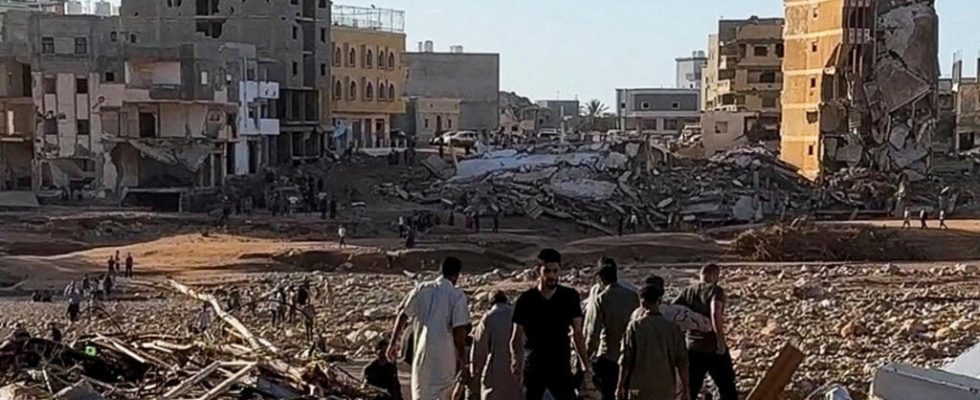In Libya, Derna and its region continue to count their deaths and humanitarian organizations fear an ever-increasing toll after Sunday’s deadly floods.
2 mins
Forty-eight hours after the tragedy, help is arriving in trickles in Derna, a town which had some 100,000 inhabitants before the tragedy. The stricken city is no longer totally isolated as in the first hours of the tragedy. But the aid, coming from Benghazi, must bypass the city by the southern road, which considerably lengthens the journey, reports our regional correspondent, Mathieu Galtier.
Cut roads, landslides and floods prevented relief from reaching the population who had to manage by rudimentary means to recover bodies buried by the dozens in mass graves, according to images posted on social networks. On site, rescuers requested body bags and teams specialized in searching for buried victims.
Read alsoStorm Daniel in Libya: the international community organizes to send aid
An eastern government employee who arrived in Derna on Tuesday says at least a quarter of the city is destroyed. Entire neighborhoods have disappeared, giving way to sticky orange mud. It was carried by the torrents of water which poured down before disappearing into the sea. The sea, which had turned the color of mud, was throwing up bodies. In images published Tuesday by Libyan media, a military helicopter can be seen recovering bodies from the beach littered with debris and pieces of iron.
Dismay at the dilapidation of infrastructure
In the stricken city, anger begins to rise. Photos are circulating showing the obsolescence of the two water retention dams of Wadi Derna, the wadi which crosses the town of Derna, on the east coast of the Mediterranean, have failed. Powerful torrents then destroyed the bridges and swept away entire neighborhoods with their inhabitants on either side of the wadi, before flowing into the sea.
More than the rain caused by Storm Daniel, it is the water from these dams which is responsible for the destruction of part of the port city, according to specialists. The various wars and the division of the country into two political entities since 2014 have accelerated the dilapidation of these infrastructures.
This is what this Libyan, met in Tunis by our correspondent, underlines, Amira Souilem. Listen to his report.
Ahmed admits to not being very surprised by what is happening in his country. “We should have realized years ago that the rivers and dams in the region were a problem. The infrastructure is bad. If we had paid attention to this earlier, we wouldn’t be here. But who exactly do you blame? You know the complicated situation in Libya…”
The emotion of Libyans in Tunis who discover the images of devastated Derma
